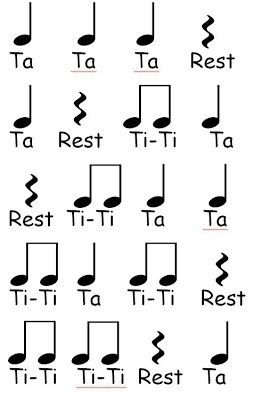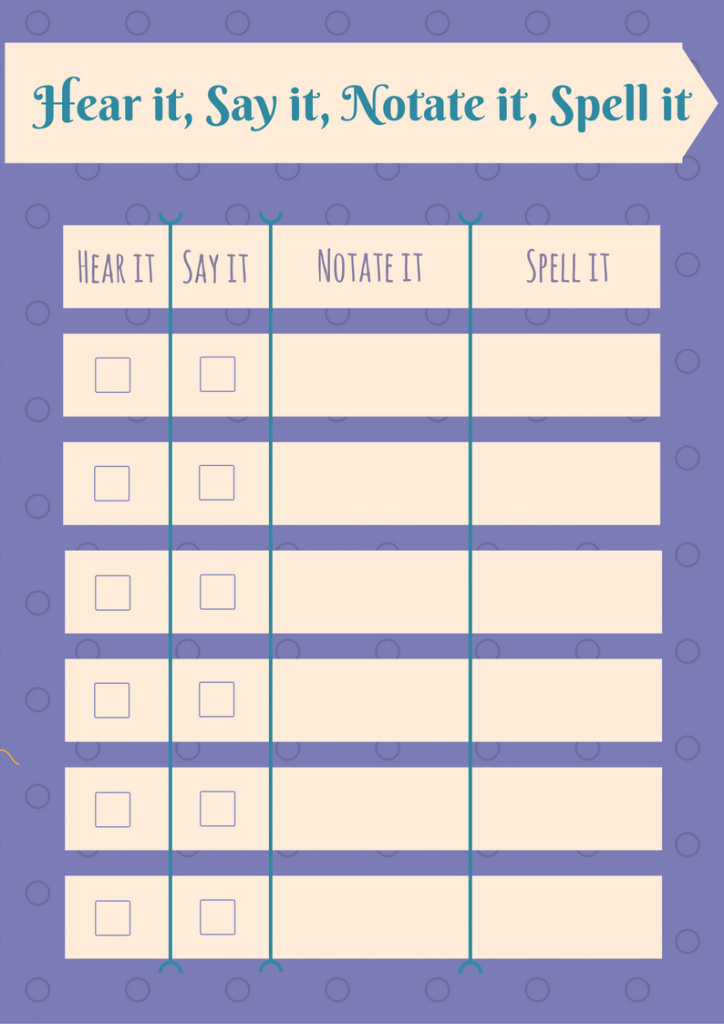Hear It, Speak It, Notate It, Spell It Strategy
3 Min Read • Literacy
We may think of counting syllables as an activity for our earliest learners, but learning the rules of syllabication are important for our intermediate students as well. Not only does it help students spell words correctly, but it helps established readers decode multisyllabic words, allowing them to comprehend and read fluently. There is a huge connection between reading fluency and music. The strategy “Hear It, Speak It, Notate It, Spell It” merges syllable practice with music notation so that students can visualize each word as a rhythm.
The Strategy
In order for this strategy to work well in the classroom, students (and teachers) should have prerequisite knowledge about basic syllabication rules as well as very basic musical notation. In many elementary word work programs and curriculum, weekly spelling lists are grouped based on phonics patterns. The Hear It, Speak It, Notate It, Spell It strategy is helpful when teaching VCCV words, compound words, double consonant words, and consonant-le words. Please see resources for background information and teaching tools for syllables as well as notation.
Step 1: Hear it
Let’s try this strategy with the word “mirror”. After learning the rule of syllabication which states that a syllable split occurs between doubled consonants, students can practice the word using this strategy. To introduce the strategy, first say the word aloud for students.
Step 2: Say it
Have students help to determine how many syllables the word has. Traditionally, people clap to count syllables, but I have found it is more concrete (and accurate) for students if they say the word with their hand resting under their chin. When they speak without moving their hand, their chin will bump their hand on each syllable. We determine that “mirror” has two syllables.
Step 3: Notate It
Next, have students notate the word. To do this, students (and teachers) need to know basic notation of quarter notes and eighth notes. The word “mirror” is notated like this:
If you need a crash course in musical notation, this is the “ta, ta, ti-ti ta” that you may have learned in elementary music class. General musical notation for “ta’s”, “ti-ti’s”, and rests look like this:  Step 4: Spell It
Step 4: Spell It
Now that students have heard the word, said it aloud, and notated the word, it is time to spell it. Remind students of those helpful syllabication rules, especially the one about splitting between doubled consonants and the rule of at least one vowel in each syllable. Then have students spell and write the word. Check the spelling together to see if it follows the syllable rules and if the notation is correct.
I find it helpful for students to record their words on a template like the one shown below. If this could be helpful in your classroom, download a pdf version here.
As an extension, students may have fun working on multisyllabic words within a four count phrase. Chanting the rhyming game Hickety Pickety Bumble Bee, Who Can Say Their Name For Me to a steady beat is a great way for students to practice fitting their name into four counts, allowing them to notate more than just quarter notes and half notes of two syllable spelling words. While my third graders sometimes scoff at the seemingly childish rhyme, they are usually challenged by it and end up loving it.
Have you tried this strategy or used a variation of it? Please share your success stories or helpful tips in the comments below!
Resources:
- Rules of Syllabication Posters: https://www.teacherspayteachers.com/Product/Syllable-Rules-Poster-and-Bookmark-1640064
- Inspiration from a music class: http://mrskingrocks.blogspot.com/2012/08/hear-it-clap-it-write-it-2nd-grade.html?m=1
- Counting music with quarter notes and eighth notes: https://www.youtube.com/watch?v=Qd3Un34qt-c
- A fun resource for teaching note values and notation: http://www.letsplaykidsmusic.com/music-note-values/



 Step 4: Spell It
Step 4: Spell It

